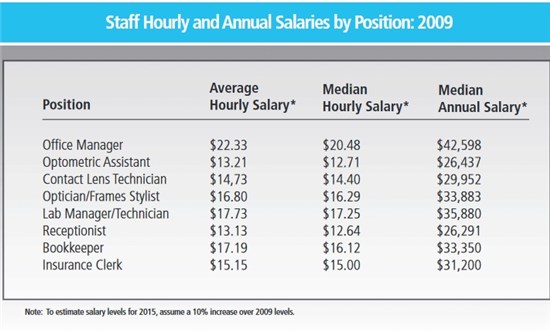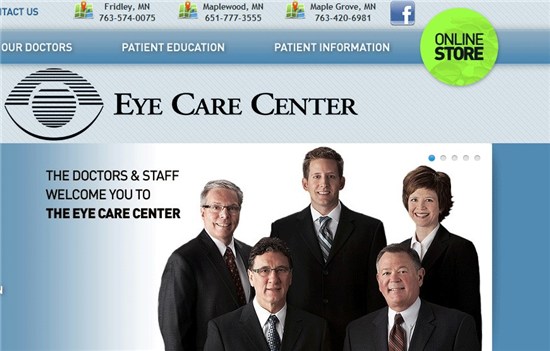By Tina McCarty, OD, FAAO
April 27, 2016

SYNOPSIS
Effectively manage one of your practice’s largest expenses with a payroll master budget and sub-budgets. Managing by numbers lets you plan intelligently for growth.
ACTION POINTS
CREATE PAYROLL SUB-BUDGET. Look at a payroll sub-budget, optical sub-budget, IT/telephone sub-budget, insurance and benefit sub-budget, leases and loans and promotion/marketing sub-budget.
ANTICIPATE HIRING NEEDS. Budget a line item(s) for potential new employee xpotential hours worked xpotential salary.
STICK TO BUDGET. Work carefully in the confines of the agreed upon percentage increase, and plan accordingly.
Employee salaries constitute one of the largest practice expenses.Without close supervision, costs can spiral out of control. I’ve found payroll budgeting to be a critical part of keeping this key practice expense manageable.
There are many different income and expense line items that require supervision, butbudgeting for payroll is essential.it would be difficult to have an accurate master budget. Accurately managing the payroll helps better manage the bottom line and ultimately how successful the partners are at the end of the year. I also found that by carefully analyzing the budget you can quickly find areas/departments that may be over- or under-staffed, or certain employees who may be over- or under-supported, and then you are able to take a careful look at overtime to try to minimize it as much as possible.
Payroll Expenses: What’s the Norm?
The median hourly salary paid to staff members for all MBA practices in 2009 was $15.29. Since 2005 the median hourly salary has increased at a compound annual rate of +1.9 percent. Office managers are the highest paid staff members, receptionists the lowest. There is little variation in hourly rates paid by practice size, except that the smallest practices typically pay about 10 percent lower salaries.
Look at Overall Practice Expenses & Create Payroll Sub-Budget
Every January we create a large master budget. We first take a careful look back at the previous year to understand how we ended and apply what we learned to the upcoming year.
The budget has many working parts and details, but the line items that have many facets to them have separate sub-budgets. Specifically, we look at a payroll sub-budget, optical sub-budget, IT/telephone sub-budget, insurance and benefit sub-budget, leases and loans and promotion/marketing sub-budget.
Assign Budgeting
All the partners, our clinic administrator and our optical manager are each assigned to a different sub-budget. These assignments correspond most directly with each of the practice operations that we are responsible for. Myself and our clinic administrator are responsible for the payroll sub-budget.
Within the greater working budget there is an agreed upon percentage increase (or hopefully not decrease) over the previous year that all the partners decide together as to the total line item that is allocated to payroll.
We then take the total number and look at each employee and each department individually and decide what the need is for hours worked and what amount of merit increase will be budgeted for. We also hope to have monies in the budget to allow for over-time expense that may not be anticipated, growth if a new employee would need to be hired, or if additional training hours may be needed.
Use Spreadsheet to Aid Budgeting
We use an Excel spreadsheet that I have created to meet our specific budgeting needs. I have six tabs, one for each office, one for administration/management, one for non-shareholder ODs and a summary and reserve tab. Each tab is created specific to needs. For example, for each office, I budget for these separately within our sub-budget, so when this information is entered into the master QuickBooks budget, the tabs and QuickBooks line items correspond. Each office tab lists rows for each department (front desk, assistants, optical, billing, recall) and each individual employee on a separate row within each department. I have columns for date of hire, wage of the previous year, anticipated salary adjustment for current year, hours worked per week.
I then have a column for what the total base would be for entire 2015 (wages, hours worked), another column for total base with the salary adjustment (new wage times hours worked) and a column that figures the net impact of salary adjustment that takes into account the month of the year that the salary increase would take effect.
So, for example, if the 2015 wage is $15/hour and the employee works 40 hours per week the line item is (15 x40 x52= $31,200). Say I anticipate the wage to be increased to $15.50 in 2016 the new wage over the entire new year would be (15.50 x40 x52 = $32,240). Then say the date of hire was 6/1, I figure that the first five months of the year are on the old pay and the later seven months of the year on the new pay so I budget accordingly and the net impact column has a background formula that looks like (31,200 x5/12 + 32,240 x7/12 = $31,807).
Anticipate Hiring Needs
To have an accurate budget the decision on hiring is best anticipated. We budget a line item(s) for potential new employee X potential hours worked X potential salary. In a prefect world there would be deliberate leeway, but like any budget (household or business) it is pretty easy to find a place to spend money that isn’t properly allocated for.
It’s good to get feedback from your employees about what additional staffing needs they see, but keep the overall practice’s needs in mind. The trouble is that most employees “feel” operations would be improved with additional staff, but we always need to have a hard analysis on whether additional staff is actually necessary. If employee consensus is that we need additional staff because we had a rough winter with illness or vacations, are those same employees willing to down-staff if we are over-staffed when everyone is healthy and not on vacation? Employees feel differently around this issue, which is why we try to stick as close to scheduling the hours worked that are previously agreed upon.
Related ROB Articles
Six Ways to Stay on Budget When Expanding Office Space
Eight Ways to Compete with Warby Parker
Six ROI Winners for Your Practice
Budget for Bonuses
Our non-shareholder ODs and management are bonused based on their individual performance and metrics that have been carefully outlined in their hiring contract. For the rest of the staff, we currently pay out a monthly bonus if the receipts exceed the monthly goal. The bonus is paid as a percentage of the collections over goal divided by each staff member according to the hours worked. If receipt goal is missed, the shortfall is added onto the next month receipt goal, so the previous month shortfall is made up in addition to achieving current month receipts before bonus is paid.
We strive daily to live the culture and mission statement that we have outlined together. We want to be a practice that employees enjoy coming to work at, and where they are paid fairly, have excellent benefits including medical/dental, 401(k)and generous paid time off, along with a bonus structure that fosters the employees working together as a team as we are all rewarded and succeed together.
Stick to Your Budget
In looking at the big picture it is challenging to figure salary increases for the entire year in January. However, to have a sound budget, it needs to be done. We work very carefully within the confines of the agreed upon percentage increase and plan accordingly. Outstanding performance is easier to reward with bonuses because if we are more profitable than expected there are additional monies to be distributed as bonus rather, than salary adjustment. If we had a miss on merit increase, and we decide to give larger merit increase than budgeted for, the dollars need to be found elsewhere to keep the budget balanced.
Tina McCarty, OD, FAAO, is a partner of Eye Care Center in Fridley, Maplewood and Maple Grove, Minn. To contact her: tina.mccarty@eyecarecenters.net





























